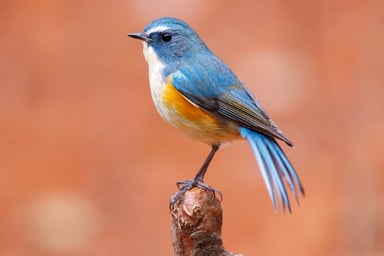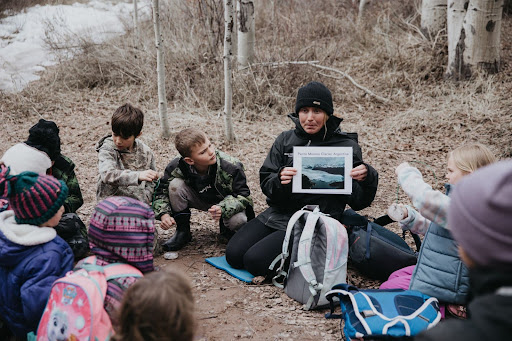In Colorado, the vernal equinox holds deep significance as it marks the transition from winter to spring in the high-altitude landscapes of the western slope. Rooted in ancient traditions and celebrated by indigenous peoples for millennia, the vernal equinox symbolizes the balance between light and darkness, heralding the arrival of longer days and warmer temperatures. In this rugged terrain, where snow-capped peaks and alpine meadows define the landscape, the vernal equinox signals the awakening of nature from its winter slumber. It's a time when residents and visitors alike eagerly anticipate the emergence of wildflowers, the return of migratory birds, and the melting of snow, signaling the beginning of a new season filled with promise and renewal.
One of the most captivating aspects of spring in Colorado is the emergence of wildflowers. Delicate pasque flowers peek through the lingering snow, their purple petals a vibrant contrast against the white landscape. The pasque flower, also known as the mountain anemone, possesses remarkable adaptations that allow it to thrive in Colorado's harsh, high-altitude environments. As one of the first wildflowers to emerge in spring, the pasque flower's ability to withstand freezing temperatures is a testament to its resilience. One of its key strategies for keeping warm is its dense, wooly covering of fine hairs that insulate the plant from the cold. This fuzzy coat traps heat close to the surface of the flower, creating a microclimate that shields it from freezing temperatures and frost. Additionally, the pasque flower has the remarkable ability to generate its own heat through a process known as thermogenesis. By metabolizing stored carbohydrates, the plant produces heat, raising its internal temperature and allowing it to bloom even when the surrounding air is still chilly. These adaptations not only enable the pasque flower to survive in the harsh conditions of the alpine environment, but also make it one of the first heralds of spring, providing a splash of color against the backdrop of melting snow and barren landscapes.

Pasque Flower emerging as the snowpack melts
As the days grow warmer, the alpine meadows come alive with a riot of colors as columbines, lupines, and Indian paintbrushes unfurl their petals, attracting pollinators and admirers alike. Alongside the blooming wildflowers, wildlife also senses the shift in seasons, and their activities reflect the awakening of spring. In Colorado's alpine meadows and forests, you may catch glimpses of animals emerging from hibernation or migrating back to their breeding grounds. Migratory birds such as the Mountain Bluebird and the Dark-eyed Junco are some of the first to return to nest in the high country, filling the air with melodious calls after a long winter's absence. Elk and deer venture down from the higher slopes in search of fresh forage, their antlers adorned with the velvet of new growth. As the snowpack recedes, revealing patches of bare earth, small mammals like pikas and marmots emerge from their underground burrows. These industrious creatures scurry about, gathering food and basking in the newfound warmth of the sun, eager to replenish their depleted stores after a long winter.

Mountain bluebird returning to the alpine
The spring equinox also holds cultural significance for the communities nestled in Colorado's alpine regions. For centuries, indigenous tribes like the Ute people have celebrated the changing of seasons with rituals and ceremonies, honoring the rhythms of nature that sustain life in these harsh environments. Today, modern-day celebrations such as equinox festivals and community gatherings continue this tradition, fostering a deep connection to the land and its cycles.
But perhaps the most dramatic manifestation of the spring equinox in Colorado's alpine environments is the phenomenon known as "mud season." As temperatures oscillate above and below freezing, the melting snow gives rise to muddy trails and swollen creeks. It's a challenging time for outdoor enthusiasts, as navigating the treacherous terrain requires careful planning and waterproof gear. Yet, for those who dare to venture into the wilderness during this transitional period, the rewards are ample—a front-row seat to nature's rejuvenation and the opportunity to witness the landscape in a state of flux.
Students participating in our spring field science programs will soon be experiencing this flux firsthand. As the seasons change here in the valley, sunny days can quickly become snowy, and snowy days can end in blue skies, making field trips a new adventure every time. There is never a guarantee of what kind of weather students will experience when they visit, so it’s best to be prepared for it all! When navigating our trails in mud season, it’s always a good idea to wear close-toed shoes with traction and multiple layers to keep you warm and dry. Getting up close and personal with a Pasque Flower or a Mountain Bluebird might require you to step in mud, so take our students’ advice to “Leave your favorite shoes at home when you come to Walking Mountains.”
 Students experiencing the spring thaw with snow and mud during their field science program!
Students experiencing the spring thaw with snow and mud during their field science program!
As the spring equinox ushers in a new chapter in the alpine landscapes of Colorado, it serves as a reminder of nature's resilience and adaptability. Despite the challenges posed by harsh winters and rugged terrain, life persists and thrives in this high-altitude wilderness. So, as you witness the first signs of spring in Colorado's alpine environments—whether it's the emergence of wildflowers, the return of migratory birds, or the muddy, melting snowpack—take a moment to marvel at the wonders of nature and the enduring spirit of the mountains. And don’t forget to wear your muck boots!
Written by Ania Gonzalez. Ania is a first-year Foley Graduate Fellow excited to experience her first spring in Colorado!


 Students experiencing the spring thaw with snow and mud during their field science program!
Students experiencing the spring thaw with snow and mud during their field science program!






